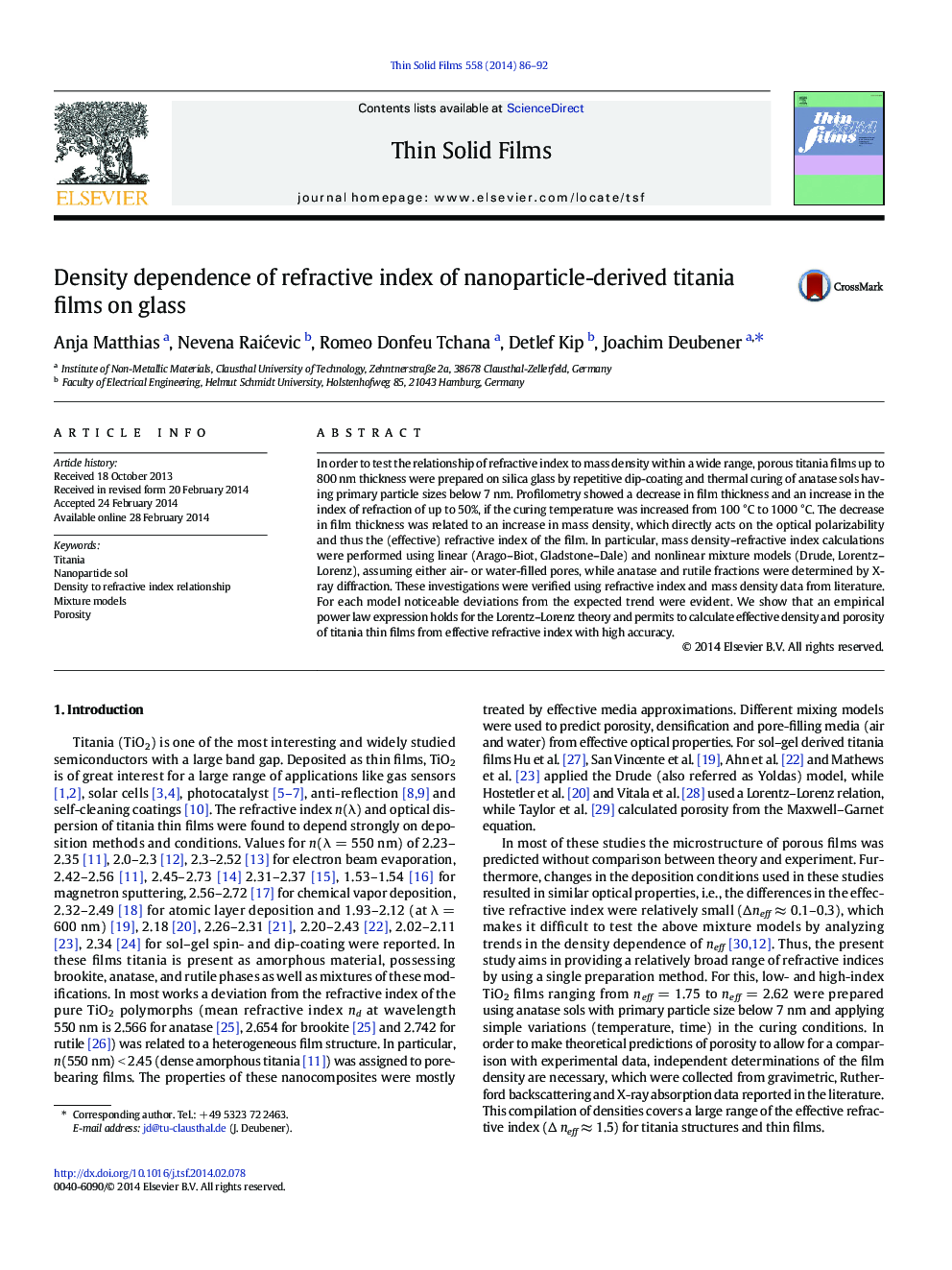| Article ID | Journal | Published Year | Pages | File Type |
|---|---|---|---|---|
| 1665433 | Thin Solid Films | 2014 | 7 Pages |
•The relationship of refractive-index-to-mass-density of titania films is investigated.•Commonly used mixture models show noticeable deviations from experimental data.•An empirical power law expression permits to calculate porosity of titania thin films.
In order to test the relationship of refractive index to mass density within a wide range, porous titania films up to 800 nm thickness were prepared on silica glass by repetitive dip-coating and thermal curing of anatase sols having primary particle sizes below 7 nm. Profilometry showed a decrease in film thickness and an increase in the index of refraction of up to 50%, if the curing temperature was increased from 100 °C to 1000 °C. The decrease in film thickness was related to an increase in mass density, which directly acts on the optical polarizability and thus the (effective) refractive index of the film. In particular, mass density–refractive index calculations were performed using linear (Arago–Biot, Gladstone–Dale) and nonlinear mixture models (Drude, Lorentz–Lorenz), assuming either air- or water-filled pores, while anatase and rutile fractions were determined by X-ray diffraction. These investigations were verified using refractive index and mass density data from literature. For each model noticeable deviations from the expected trend were evident. We show that an empirical power law expression holds for the Lorentz–Lorenz theory and permits to calculate effective density and porosity of titania thin films from effective refractive index with high accuracy.
